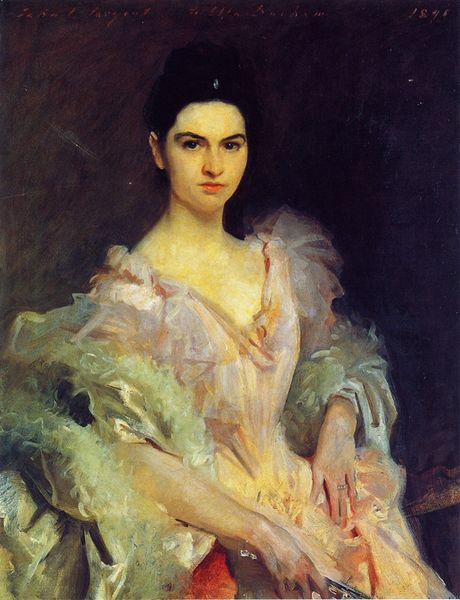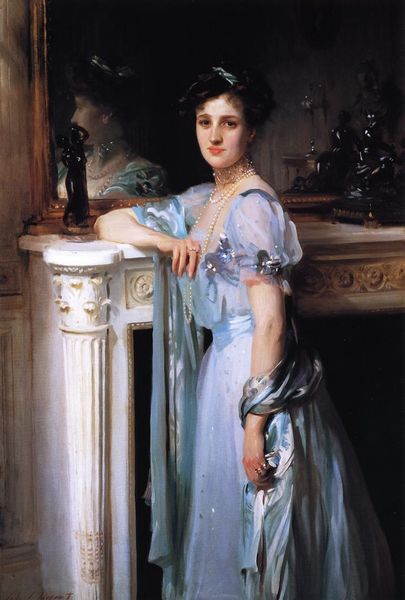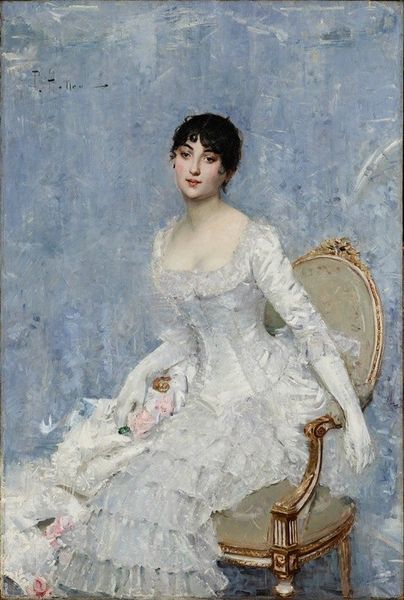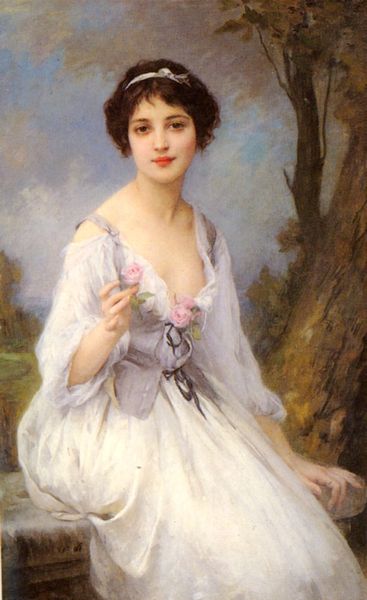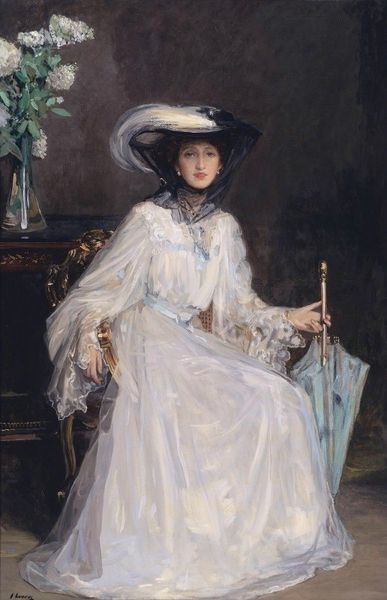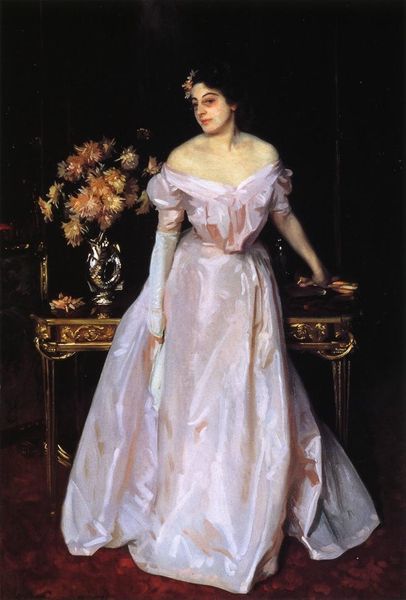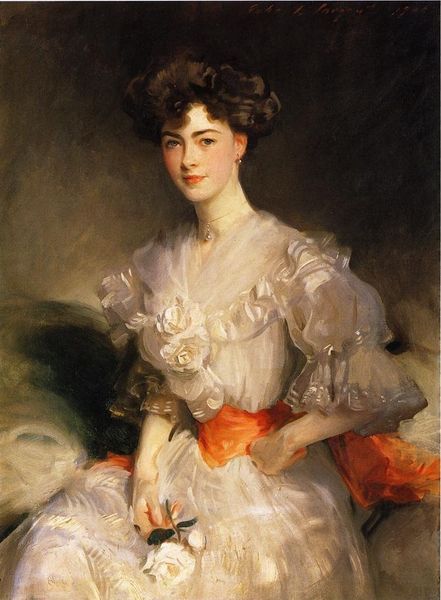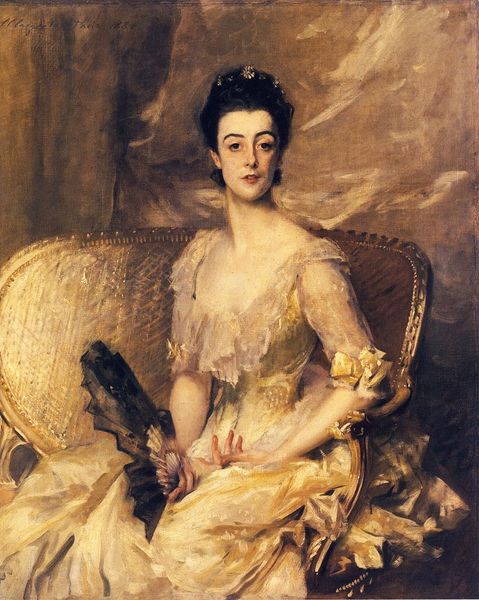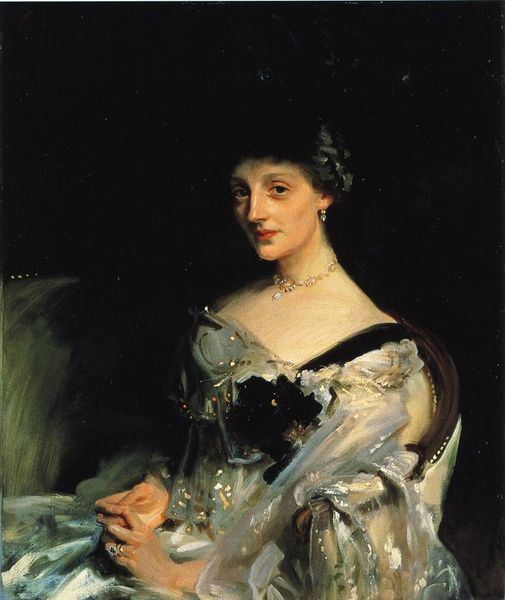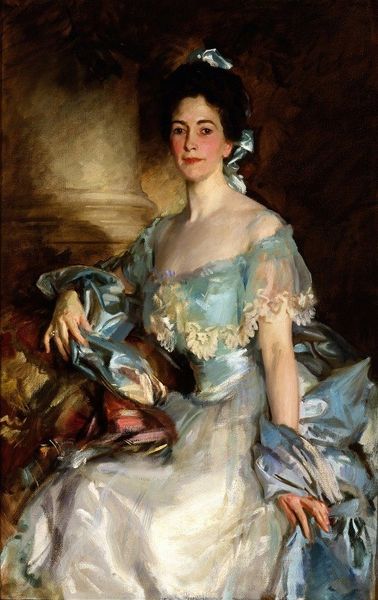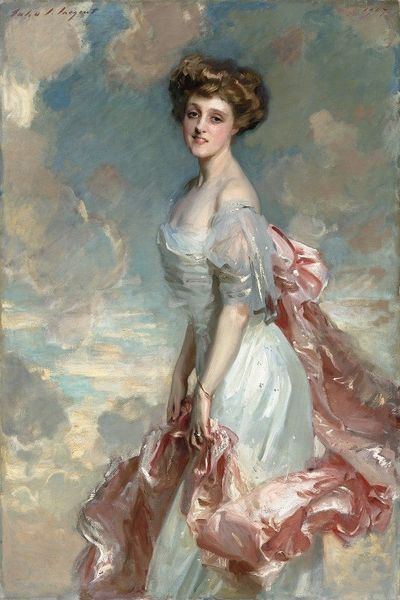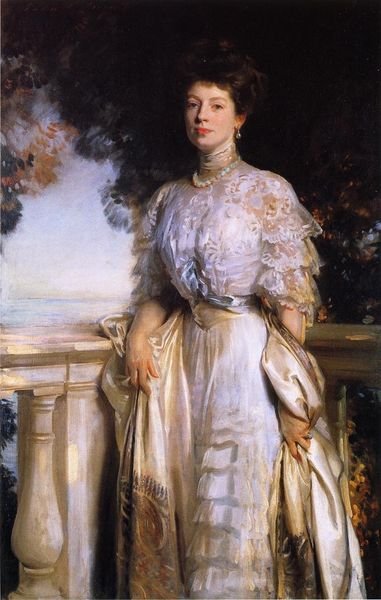
Dimensions: 152.4 x 96.5 cm
Copyright: Public domain
Curator: Let’s turn our attention to John Singer Sargent’s "Gladys Vanderbilt," a captivating oil painting from 1906. It's currently held in a private collection. What's your initial reaction? Editor: An air of restrained power. The portrait is poised but not exactly inviting, her gaze is assessing. You feel a subtle tension, even within the elegant composition and delicate coloring. Curator: I find myself wondering about the provenance of the paint itself, the quality of the linen canvas Sargent favored, the societal pressures shaping his choice of materials. What can these raw materials tell us? It also raises an important question about art patronage. Who commissioned it, and why? What level of control was exercised? Editor: Gladys Vanderbilt was, of course, a Gilded Age heiress. Seeing her posed like this immediately makes me consider the role of women in that era – objects of beauty and status within a tightly controlled social hierarchy, a trophy in marriage. What were the labor practices, the materials involved in constructing the lifestyle depicted here, and how did that feed into this very rigid structure of power? The symbolism in these clothes and ornaments isn’t accidental either. They represent a cultural project through which Gladys' value gets created. Curator: Exactly. The rendering of her gown, look at how the light interacts with its surface. What threads make up this intricate garment? Did the creation of the Vanderbilt's material wealth provide opportunity to artists, artisans, laborers involved in its fabrication? The sheer scale of these portraits, meant to fill grand spaces, demands examination. Editor: The portrait reminds us how images become instruments. We cannot forget, while marveling at Sargent's skill, how easily artistic talent served—and continues to serve—systems of wealth and control. Curator: In the end, Sargent's brushstrokes, laid down with undeniable mastery, can themselves be seen as part of this larger industrial system he supported. How his genius was interwoven with market, class, privilege. Editor: Precisely. Thinking about these pieces reveals the stories embedded not just in their artistry but their origins and effects. Curator: A fascinating synthesis, revealing layers we might otherwise overlook. Editor: It reminds us that context enriches everything we perceive.
Comments
No comments
Be the first to comment and join the conversation on the ultimate creative platform.

